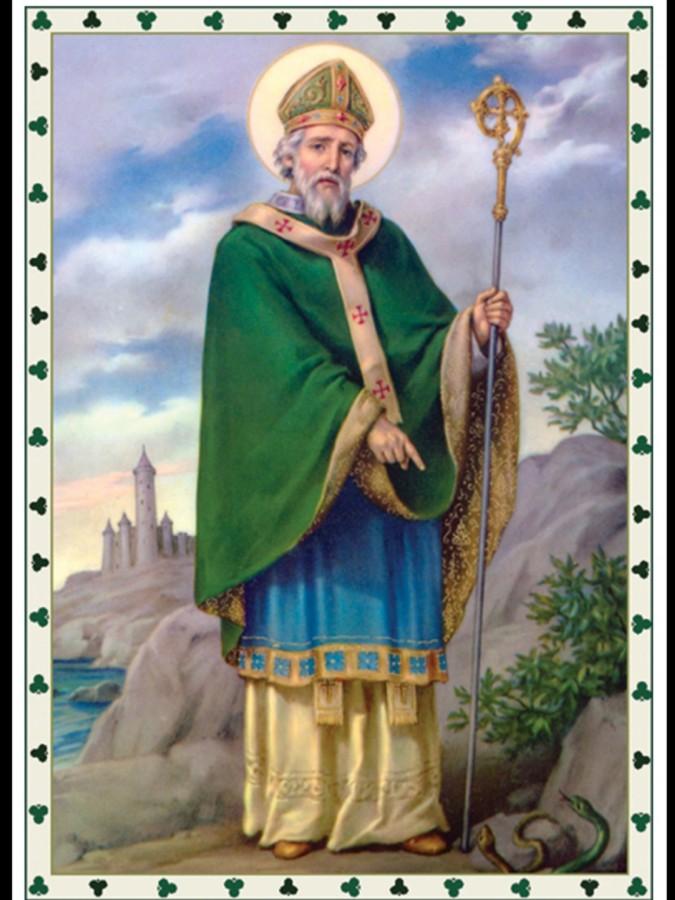Luck of the 17th
The History of Saint Patrick’s Day
Saint Patrick had an unmistakeable influence on Irish Catholics (Photo courtesy of celticvoices.com).
March 11, 2016
Students have been raised to believe that St. Patrick’s Day, which falls on March 17, is a celebration of leprechauns, pots of gold coins sitting at the ends of rainbows, and green clothes, only worn to avoid getting pinched. Although these joyful interpretations of the holiday involve some traditional activities, they fail to educate students on the engaging history of the Irish.
St. Patrick’s Day was formed to celebrate the Irish culture and history world-wide. Specifically, according to Catholic Online, it reminds people of Saint Patrick, who converted much of Ireland to Christianity. He died at the first Irish Catholic church in 461. Saint Patrick is often represented with a shamrock because he used shamrocks to teach the Irish Catholics about the Holy Trinity.
Food is also a huge component of the holiday. Common foods that are eaten during this celebration include corned beef and cabbage, meat pies, coffee, stews, and potato soup. Children often indulge in sweet and adults enjoy a pint of beer.
Festive parties and parades across the country also mark March 17 celebrations. One of the most notable celebrations is in Chicago, where the Chicago River is dyed green.
St. Patrick’s Day is a large nationwide celebration where most accept the motto “Everyone’s Irish on Saint Patrick’s Day.”



